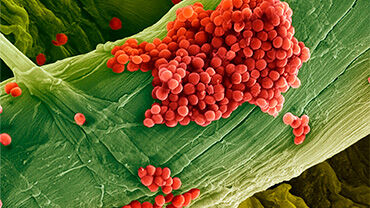Effect of introducing high-valency pneumococcal conjugate vaccines on invasive pneumococcal disease in children
The introduction of high-valency conjugate vaccines against pneumococcal disease, PCV10 and PCV13 which target 10 and 13 of the serotypes causing the disease respectively, has resulted in an overall decrease in invasive pneumococcal disease in children younger than 5 years.
This is the main finding of a recent article based on data from The Streptococcus pneumoniae Invasive Disease network (SpIDnet). SpIDnet is an ECDC funded enhanced active surveillance network for invasive pneumococcal disease providing comparable surveillance data on the disease and effects of vaccination. This network allows the collection of surveillance data using a common methodology an approach that enables a more robust analysis than could be achieved with data from one country.
The authors analysed pooled data from nine sites in seven European countries. They report that, four years after the introduction of these high-valency vaccines the incidence of invasive pneumococcal disease decreased by 47% compared with the previous period when the heptavalent pneumococcal conjugate vaccine (PCV7) was used. Incidence decreased by 55% when compared with the period before introducing the PCV7 vaccine. This overall decline is due to a decrease in disease caused by the serotypes covered by the vaccines and highlights the positive overall effect of the vaccination programmes. In contrast, the incidence of invasive pneumococcal disease caused by non-PCV13 serotypes increased by 62%, which suggests the occurrence of serotype replacement. Continued surveillance of invasive pneumococcal disease in Europe is essential to provide further evidence of the effects of the PCV10 and PCV13 vaccination strategies on the epidemiology of invasive pneumococcal disease.






